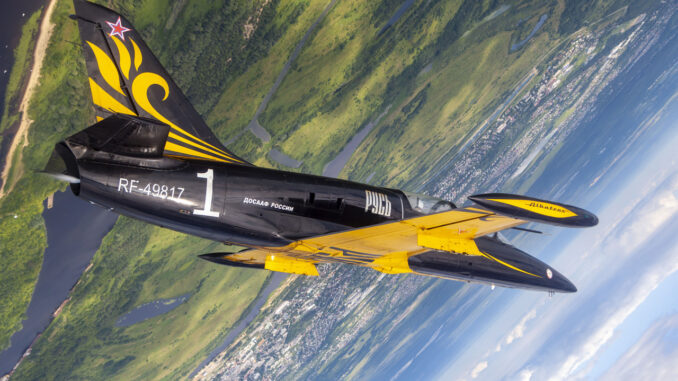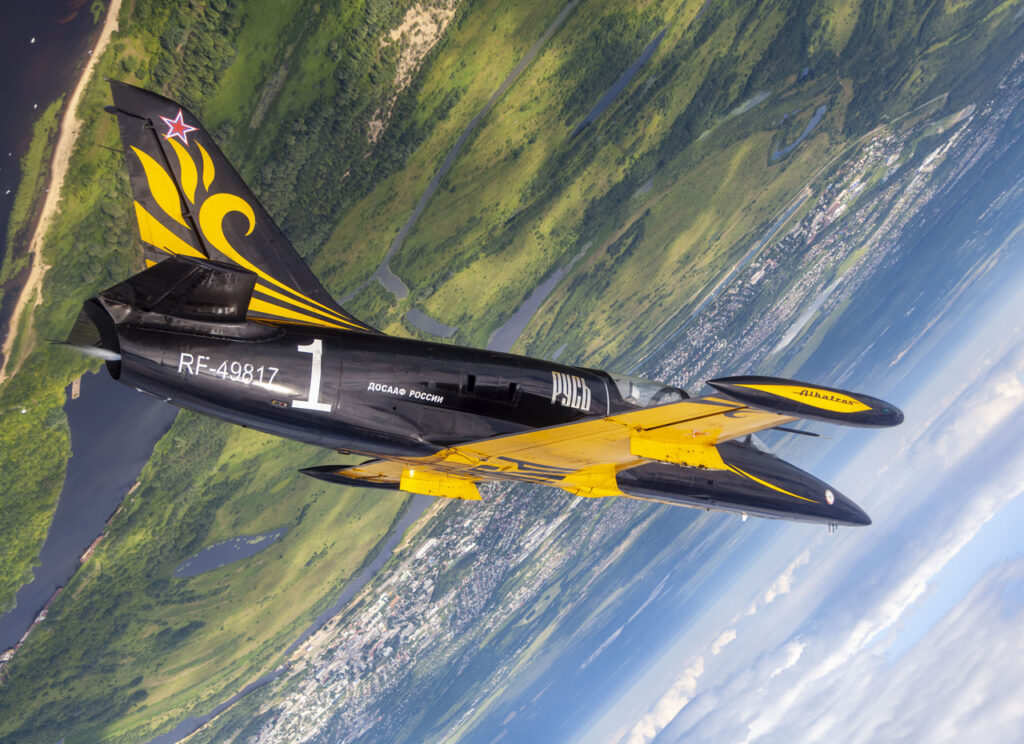
The L-39 Albatros jet trainer is used by several countries for a variety of missions ranging from pilot training to light combat.
The L-39 Albatros is a jet trainer designed by Aero Vodochody in Czechoslovakia in the 1960s. Used by more than 30 countries, it is appreciated for its robustness and versatility. In addition to pilot training, some countries use it for light combat, reconnaissance and air patrol missions. Its ability to fly at altitudes of up to 11,500 metres and reach speeds of up to 750 km/h makes it a reliable and economical tool for air forces with limited resources.
The L-39 Albatros: a versatile trainer
The L-39 Albatros was designed to meet the air force’s pilot training requirements. Since its introduction in the 1970s, this aircraft has been widely exported and used by more than 30 countries. With an average price of around €5 million per unit, it remains relatively affordable compared with modern trainer aircraft, while offering sufficient performance for a wide variety of missions.
The L-39 is capable of reaching cruising speeds of 750 km/h and maximum altitudes of 11,500 metres. Its range of 1,000 km makes it ideal for training pilots in advanced aerial manoeuvres. What’s more, it is equipped with instruments and avionics systems suitable for learning the basics of flying, as well as more complex flight procedures such as the use of light weapons.
Although mainly used for training, the L-39 has also been modified by some countries for reconnaissance and surveillance missions, demonstrating its versatility. In Africa, for example, several countries use the L-39 for air patrol missions and to support ground troops in low-intensity conflicts.
Use of the L-39 in Europe and Asia
In Europe, several countries continue to use the L-39 Albatros as their main training aircraft. The Czech Republic, for example, which is also the aircraft’s country of origin, uses it to train its military pilots. Other European countries, such as Hungary and Slovakia, also keep examples of the L-39 for training missions.
In Asia, countries such as Vietnam and Bangladesh use the L-39 not only to train their pilots but also for light combat and border surveillance missions. Vietnam, in particular, has modified some of its L-39s to carry light weaponry, including bombs and rockets, to support counter-insurgency operations. The ability of this aircraft to operate from unprepared airstrips is a major asset for countries with limited air infrastructure.
Bangladesh uses it for initial pilot training and for maritime surveillance along its coastline. The great flexibility of this aircraft means that Asian countries can use it in roles far beyond its original design.

L-39 in Africa: training and light combat
Africa is another region where the L-39 Albatros has found significant use. Countries such as Nigeria, Sudan and Angola use this aircraft in a versatile role ranging from pilot training to light combat missions. Nigeria, for example, has employed it in operations against militant groups, using the aircraft to provide close air support to ground forces.
Sudan, meanwhile, has modified some of its L-39s for armed reconnaissance missions, equipping them with machine guns and rockets. The aircraft’s relatively low cost and simple maintenance make it an attractive option for air forces with limited budgets, but which need a rapid and effective projection capability in conflict zones.
The L-39 is also used for surveillance of borders and hard-to-reach rural areas. Its ability to fly at low altitude and operate in rudimentary environments makes it a valuable tool for African air forces in the fight against rebel groups and cross-border threats.
Use in Latin America and the Middle East
In Latin America, several countries have acquired the L-39 Albatros for training and patrol missions. Countries such as Peru and Bolivia have used this aircraft for border surveillance operations, particularly in hard-to-reach areas with limited infrastructure. These aircraft have also been integrated into anti-drug trafficking missions, where their ability to fly at moderate speeds and low altitudes enables them to track targets over long distances.
In the Middle East, countries such as Syria and Iraq have used the L-39 for light combat and armed reconnaissance missions. In Syria, for example, the aircraft was used extensively in the civil conflict, providing air support to government forces. Although the L-39 is not designed to take on modern fighter aircraft, its ability to operate at low cost and carry light weaponry makes it a useful tool in low-intensity conflicts.
Strategic consequences of using the L-39
The widespread use of the L-39 Albatros by countries with very varied profiles demonstrates the adaptability of this aircraft to different theatres of operation. Its relatively low cost, ease of maintenance and ability to fulfil several roles make it an ideal aircraft for countries with diverse military requirements and restricted budgets. In addition, its role in pilot training ensures that entire generations of military personnel are trained on a robust platform before moving on to more modern aircraft.
However, the effectiveness of this aircraft in light combat situations remains limited compared with modern fighter aircraft. In asymmetric conflicts, where aviation requirements are mainly focused on surveillance and small-scale precision strikes, the L-39 remains a viable option. However, in high-intensity warfare where the latest generation aircraft are involved, its capabilities could quickly be overtaken.
War Wings Daily is an independant magazine.